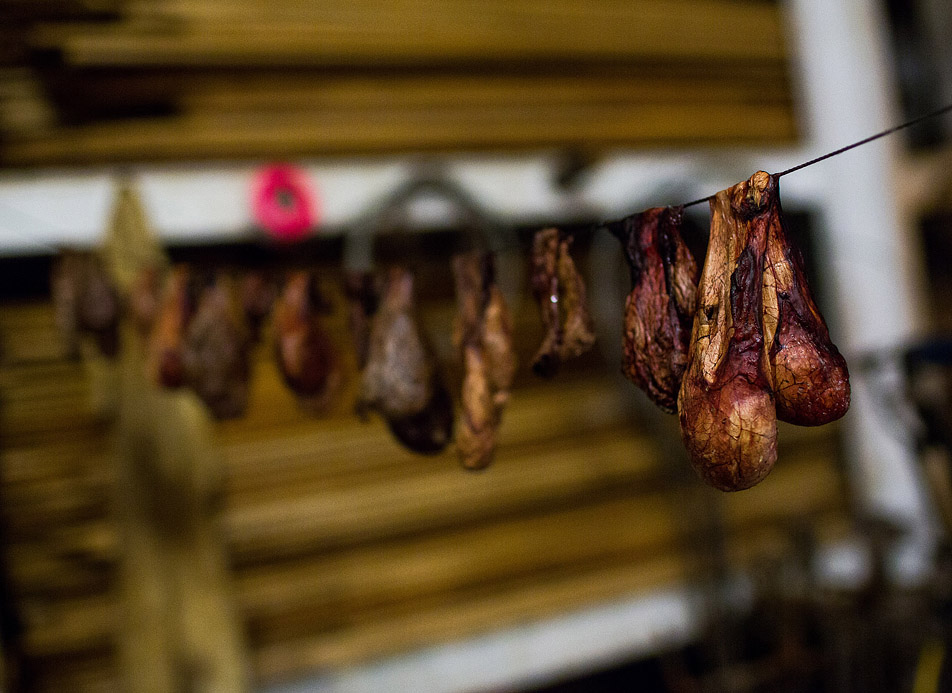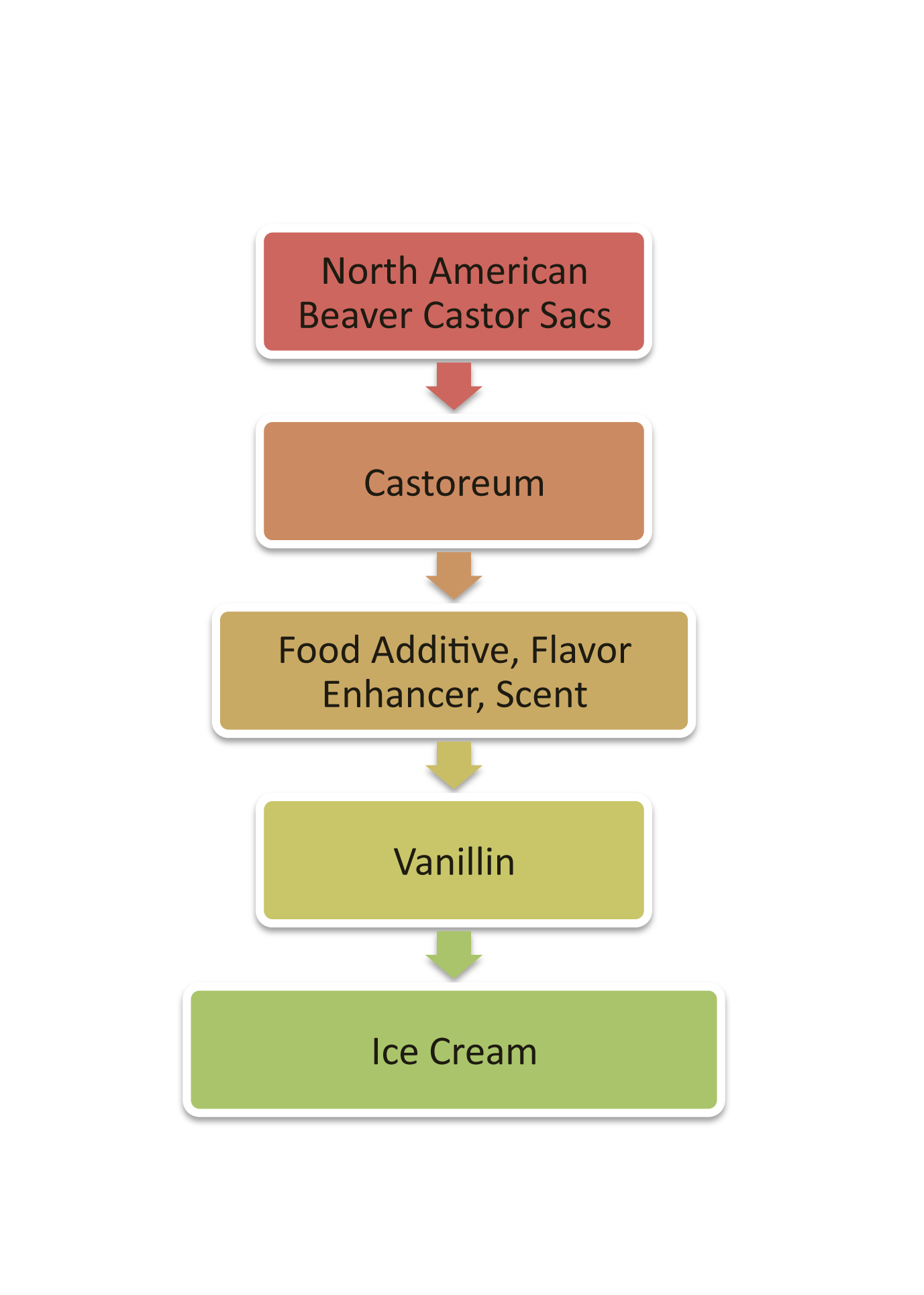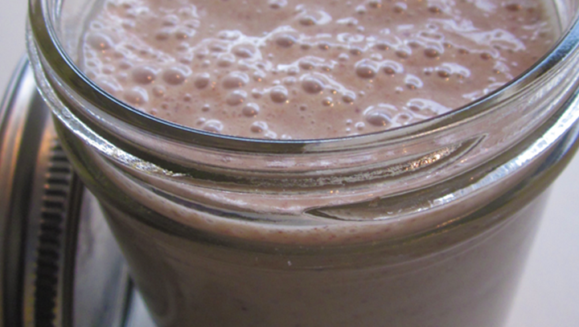I don’t even know how to start this discussion on the natural flavoring ingredient castoreum. So, I’ll get straight to the point and then explain. That way, you can decide whether you want to know more about this tidbit of information in your brain.
Ready…???
Here goes. I rue the day I discovered castoreum, how it has become a 292 pound a year food additive and flavor enhancer that slips surreptitiously into our food under the guise of “natural flavoring”. This flavoring is in products we consume everyday including alcoholic beverages, baked goods, frozen dairy, candy, beverages, meat products, pudding, ice cream, vanilla flavored foods, raspberry flavored foods and perfume based products like air fresheners and body products.
Here’s the kicker. Castoreum is expressed from the anal glands of the North American Beaver. Yes, folks that’s the food additive of the day.
If you’re still reading, then you may now be sucked into an internal evaluation on how and why all those words came together in one sentence. I’ll do my best to present the facts, but I can’t promise I won’t be biased. That said, let’s start from the beaver and work backwards to the plate.
Let’s first define castoreum. According to the 5th Edition of Fenaroli’s Handbook of Flavor Ingredients, “Castoreum is a secretion from the male or the female beaver. The name designates the dried follicles and glandular secretion. The animals are widely encountered in Alaska, Canada and Siberia. Castoreum is removed from the animal during the skinning period and is dried in the sun or sometimes over burning wood. The fresh pouch contains a yellowish butter-like mass with a fetid, sharp aromatic odor. The dried product is brown, hard and resinous…”1
Trust me, it goes on, but I figured I’d stop there as you probably get the gist. So we know Beavers (obviously of the Castor genus) are semi-aquatic nocturnal rodents that build dams and lodges. They are herbivores, hold the title of the 2nd largest rodent in the world and are native to North America and Eurasia. Beavers once had a population of 60 million in North America, but in 1988 the population of beavers declined to somewhere between 6 and 12 million due to extensive hunting for fur and also for the harvesting of castoreum for commercial use.2
Historically, beavers have been hunted for centuries. In fact, beaver pelts were a huge part of the American economy during the bartering times of the 17th century. These days, beaver pelts aren’t used as currency, but beaver fur is still valuable on the market and is used in the making of wearables like hats and coats. The rest of the beaver gets scrapped into feed and the “yellowish butter-like mass” inside the scrotum gets sold to the producers of artificial scents and natural flavorings.
So now we know a little bit about the beaver’s role in our food chain. I created a graphic interpretation of castoreum’s circuitous route into just one food item many of us eat often – good ‘ol vanilla ice cream. Á la mode suddenly takes on a new meaning.
According to Fenaroli, castoreum is an animal by-product processed into many forms including a dried secretion, tinctures, absolutes and resinoids. In these forms, it can end up disguised as a “natural” ingredient in hundreds of food and beauty products as a scent or flavor enhancer. It is generally counted in PPM (parts per million) and can show up in everything from alcoholic beverages and baked goods, to candy, meat products and dairy. It is also found in lip balms, perfumes, household products and shampoos and conditioners.
According to a study done on the safety of castoreum as a food additive in 2007, it is legal and has been used for at least 80 years and the extract is generally recognized as safe (GRAS). It is also known to be an additive that give a new car its “new car” scent. Luckily for us, it seems to be non-toxic but that doesn’t explain the why. Why in the world would we need to have this additive in our food or personal care products?
There can only be two plausible reasons. And since food and money are always linked; here’s my guess. Number 1.) It’s a cheap, potent input. I found a website where you can buy a pound of beaver castor sacs for $11.00 per pound or so. But those were numbers from 2006, so counting for inflation that same pound of castor sacs would cost almost $13.00 today. Once procured, it is processed with a hot alcohol treatment (which is probably pretty cheap). This pure and potent extract then gets sold to food flavoring manufacturers for a few thousand dollars and then diluted with synthetic ingredients, sold again to big food manufacturers to make flavorings like vanillin – which in turn gets sold again as an ingredient (whether shown on the ingredients label or not) and then sold again to us. Remember, food is a business.
Which brings me to reason Number 2.) Castoreum makes foods like ice cream, cookies, pudding, etc., taste better. In an addictive kind of way because it makes the food taste deliciously consistent. That’s the thing with processed foods – the taste must be consistent. If you produce vanilla ice cream without food additives today it might taste perfect. But if you make it again next week without food additives, you are subject to the fluctuation of nature – and that doesn’t make for good business profits. The reason we buy a specific kind of vanilla ice cream again and again is primarily for the taste. If real vanilla were used ice cream, it could cost upwards of $10 per pint. So, using a synthetic flavoring (in hundreds of products) drives that cost way down and creates more demand and increases the supplier’s profits. By now, you should be smelling the money…
As I dug a little deeper, I discovered that the flavoring industry is a multi-billion dollar global business dominated by this multi-national purveyor of fragrances and flavorings. This company is meeting the demand. A manufactured demand. Our need for nature (or things that mimic nature) to be consistent in taste plays right into our purchasing decisions. You could say we get addicted to these “natural” flavors and that’s just what these crafty food scientists want – to keep us addicted. These companies are worse than crack dealers except for the fact that “natural flavorings” haven’t left anyone dead….yet. Oh, wait…Here’s where I get to the causal relationship…
In 2011, this internet study examined the possible addiction to “highly pleasurable foods” as a cause of childhood obesity. We, as consumers, didn’t necessarily decide to improve on mother nature. Big flavoring companies and food manufacturers WANT us to be addicted to the flavors and smells of what we eat, drink and put on our bodies to create repeat business. I swear, I’m not making this stuff up. Check out this profile on 20/20 where addiction becomes the agenda…right around minute three.
 Scientists work with food manufacturers to manipulate the flavors of just about everything…from ice cream to fatty roasted chicken. Gordon Ramsay would say, “we’ve lost the plot”. Anyone can tell we’ve lost touch with the true flavors of nature because if you’ve ever purchased food in a box, bag or can, it has likely been enhanced with some artificial or natural flavoring. If you buy products for your skin, hair or home that smell like mangoes or pine, the likelihood of them containing chemically or artificially manufactured scents is pretty high. Even organic foods and other “natural” products can contain “natural flavors” and there is no real way to know what ingredients are included in the flavoring, or what is the original source of the flavor because the flavor companies are not regulated to disclose this information.
Scientists work with food manufacturers to manipulate the flavors of just about everything…from ice cream to fatty roasted chicken. Gordon Ramsay would say, “we’ve lost the plot”. Anyone can tell we’ve lost touch with the true flavors of nature because if you’ve ever purchased food in a box, bag or can, it has likely been enhanced with some artificial or natural flavoring. If you buy products for your skin, hair or home that smell like mangoes or pine, the likelihood of them containing chemically or artificially manufactured scents is pretty high. Even organic foods and other “natural” products can contain “natural flavors” and there is no real way to know what ingredients are included in the flavoring, or what is the original source of the flavor because the flavor companies are not regulated to disclose this information.
I get that too. Intellectual property. Like a secret recipe. It is worth protecting, strictly from a business perspective. I mean, you wouldn’t give your grandmother’s secret recipe away to just anyone, right? You’d want to make some profit too. To boot, these companies employ thousands of people around the world. Creating jobs is an important part of our economy and I could present an entire argument supporting the continuation of creating artificial and “natural” flavors. But at the end of the day, if the intention is to get us more addicted to what we eat, we will continue to spend money on these foods – again, and again, and again. If we eat more addicting foods than we eat non-addicting foods, we’ll see dietary imbalances. Dietary imbalances can lead to degenerative diseases at some point. And degenerative diseases like diabetes, asthma, obesity, and heart disease can all be linked to dietary imbalances and for some, can be lethal.
How do we get sucked into this carousel of delicious deception? Well, it’s a marketing mind f*ck. More aptly stated, we get tricked. The “natural” label has become quite pervasive in food packaging. The green pastures and barn images lead us to believe that the product is “grown” naturally somewhere by some farmer, but the likelihood is that many of the ingredients were made in some laboratory, with some of the most unnatural ingredients (eg: beaver sac juice) and then processed into our food surreptitiously. This video is a playful and funny, but is very real interpretation of how big food manufacturing companies use the word “natural” and other variations on their packaging.
My opinion doesn’t matter here, but I’ll offer it briefly one last time. 🙂 I like food. I even like ice cream. There’s something really foundational about vanilla ice cream. Not only is it delicious, but…it’s delicious. It’s all-American. It’s 4th of July. It’s what makes an ice cream cake the magic that it is. But…the last thing I want in my apple pie á la mode with vanilla ice cream or my very essential lip balm is, North American Beaver yellowish butter-like resinoids that make me addicted to the taste of it for profit. The reality is the way to circumvent this cycle of impending addiction is to make your own food from REAL, organic (labeled) ingredients. There’s no guarantee, of course (because the regulations of organic ingredients are not always enforced), but the chances of getting beaver anal sac juice in your ice cream, candy, meat product or body lotion will probably be a lot less.
This isn’t only about castoreum derived from beaver anal sacs or vanilla flavoring that is added to our food so it will taste consistently delicious. It’s also about addiction, big food manufacturers and profits. Both the manufacturers and the consumers take responsibility. The choice is yours, but what’s compelling is, now that you know, will it change what you eat or buy?
1. http://books.google.com/books?id=A8OyTzGGJhYC&lpg=PA277&ots=YeByZKDtcL&dq=castoreum%20food%20ingredients&pg=PA277#v=onepage&q&f=false
2. http://en.wikipedia.org/wiki/Beaver



